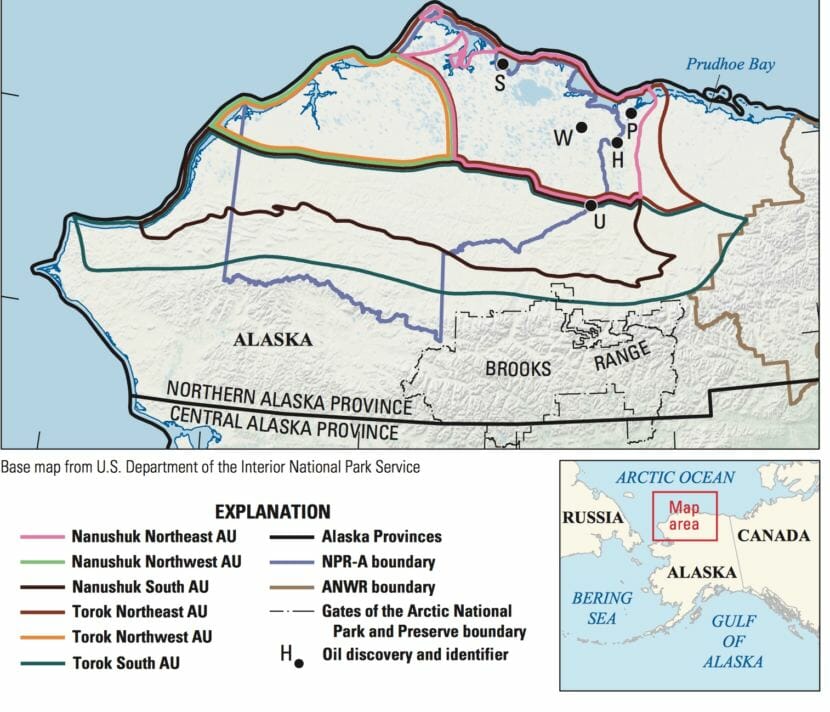
Congress just passed a law to allow oil development in the northeastern Arctic, in the Arctic National Wildlife Refuge. Now, the Interior Department has announced a new assessment of the northwestern Arctic, in the National Petroleum Reserve-Alaska. It suggests a “HUGE” increase in oil and gas resources in NPR-A. The government press release actually says it in all caps: “HUGE.”
Interior Secretary Ryan Zinke has called for more energy production in the reserve, and Friday’s announcement could serve as a marketing brochure.
The U.S. Geological Survey says NPR-A, along with land and water just outside the reserve, have a mean estimate of 8.7 billion barrels of undiscovered, technically recoverable oil. That’s far more than was calculated in the last assessment in 2010, although the two estimates aren’t directly comparable. The new assessment is based in part on new exploration and 3-D seismic work.
Petroleum geologist Scott Montgomery said the report isn’t really a surprise for those aware of the new discoveries on the North Slope. He said the USGS scientists who wrote the assessment are top-notch. But Montgomery said the Interior Department’s press release oversells the report.

The press release quotes Zinke saying the assessment is a “big step” toward the goal of American energy dominance: “Thanks to the incredible work of scientists … we know what’s available and what our potential is.”
Montgomery, who teaches energy geopolitics at the University of Washington, was struck by the last part.
“That is false,” Montgomery said. “We do not know what’s available.”
Montgomery said the scientists, using the data available to them, acknowledged an unusually large degree of uncertainty.
“The uncertainty is huge,” Montgomery said. “If you wanted to use that word, you could use it in two ways.”
Melanie Smith, director of conservation science at Audubon Alaska, said the announcement seems to paint a bull’s-eye on the protections in the current management plan that prohibit development in the biologically rich Teshekpuk Lake wetlands.
“That most certainly is a concern for the vast wildlife resources that are in that region,” Smith said.
Smith said Audubon will fight to keep the current management plan because the wetlands are important for caribou and polar bear and they are a vital nursery for birds.
“It’s part of America’s bird superhighway,” Smith said. “Between the Arctic coastal plain, both in the National Petroleum Reserve around Teshekpuk Lake and in the Arctic Refuge, that is just pumping out many millions of fledglings each year.”
So while Congress ended one skirmish in the the battle between Arctic oil development and conservation, the conflict is sure to continue.
